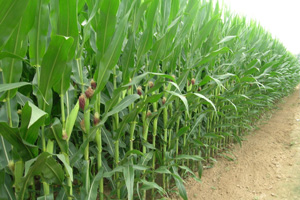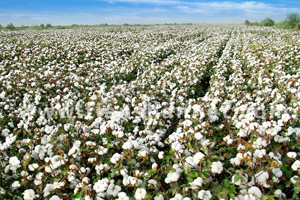Mode of action:
Thiamethoxam: Insecticide with contact, stomach and systemic activity. Rapidly taken up into the plant and transported acropetally in the xylem.
Fludioxonil: Non-systemic fungicide with long residual activity. Uptake into the plant tissues and curative properties are generally limited. Inhibits mainly the germination of conidia and, to a lesser extent, the germ tube and mycelial growth.
Metalaxyl-M: Systemic fungicide with protective and curative action, taken up by leaves, stems and roots.
Use:
Thiamethoxam: For control of aphids, whiteflies, thrips, ricehoppers, ricebugs, mealybugs, white grubs, Colorado potato beetle, flea beetles, wireworms, ground beetles, leaf miners and some lepidopterous species, at application rates from 10 to 200 g/ha (R. Senn et al., loc. cit.). Major crops for foliar and soil treatments are cole crops, leafy and fruity vegetables, potatoes, rice, cotton, deciduous fruit, coffee, citrus, tobacco and soya beans; for seed treatment use, maize, sorghum, cereals, sugar beet, oilseed rape, cotton, peas, beans, sunflowers, rice and potatoes. Also for control of flies (such as Musca domestica, Fannia canicularis and Drosophila spp.) in animal and public health.
Fludioxonil: As a seed treatment, for control of Fusarium, Microdochium, Rhizoctonia, Tilletia, Pyrenophora and Septoria spp., in both cereal and non-cereal crops, at 2.5–10 g/100 kg. As a foliar fungicide, for control of Botrytis, Monilinia, Sclerotinia, and Alternaria spp., in grapes, stone fruit, berry crops, vegetables and ornamentals, at 250–500 g/ha; also on turf, against Fusarium, Helminthosporium, Rhizoctonia, Sclerotinia and Typhula, at 400–800 g/ha. Also as a post-harvest treatment on stone fruit, pome fruit, citrus and kiwi, at 30–60 g/hl, against Botrytis, Monilinia and Penicillium spp.
Metalaxyl-M: To control diseases caused by air- and soil-borne Peronosporales on a wide range of temperate, subtropical and tropical crops. Foliar sprays with mixtures of metalaxyl-M and protectant fungicides are recommended to control air-borne diseases caused by Pseudoperonospora humuli on hops, Phytophthora infestans on potatoes and tomatoes, Peronospora tabacina on tobacco, Plasmopara viticola on vines, downy mildews of vegetables, and Bremia lactucae on lettuce, at 100–140 g metalaxyl-M/ha. Soil applications of metalaxyl-M alone are used to control soil-borne pathogens causing root and lower stem rots on avocado and citrus, Phytophthora nicotianae on tobacco, Phytophthora spp. on peppers, and Pythium spp. on many different crops, including ornamentals, at 250–1000 g/ha. Seed treatments control systemic Peronosporaceae on maize, peas, sorghum and sunflowers, at 35–300 g/100 kg seed, as well as damping-off (Pythium spp.) of various crops, at 8.25–17.5 g/100 kg seed.
Direction for use:
Apply as a water-based slurry (Slurry-seeds ratio, 1:50-100) utilizing standard slurry seed treatment equipment which provides uniform seed coverage. Uneven or incomplete seed coverage may not give the desired level of disease control.
Restriction: Ready-prepared slurry should be used within 24 hours.













